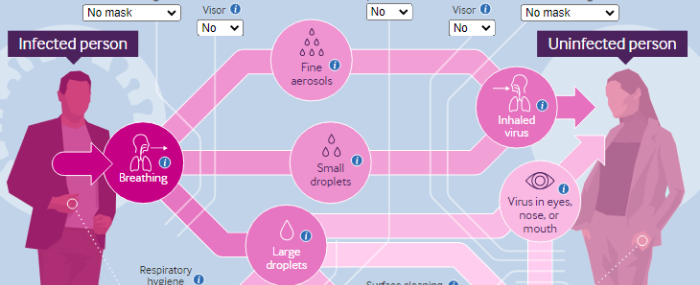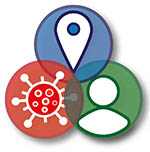
PROTECT researchers create interactive tool to improve understanding of COVID-19 virus transmission
A new interactive graphic developed by PROTECT-funded researchers and published by the British Medical Journal today (1 December 2021) will help people understand how the COVID-19 virus is transmitted in everyday situations, and what they can do to protect themselves and others.
Based on evidence and input from 27 international experts, the tool clearly visualises the potential transmission routes (airborne, via surfaces and person-to-person) of the COVID-19 virus, and enables users to see the impact of different settings, activities and precautions on the level of risk.
In line with the mission of the PROTECT study, the tool is intended to support policymakers, businesses and the general public to make informed decisions about how to sustainably reduce virus transmission in different contexts, using achievable interventions such as face coverings, improved ventilation and targeted cleaning.
The analysis that informed the tool’s development found that the airborne transmission route was most significant in most situations, while face coverings, especially when worn by an infected person as a form of source control, were the most important control measure.
Importantly, however, all routes – including via surfaces and person-to-person – were considered to play a part in transmission, and simple measures such as physical distancing, hand washing, and respiratory hygiene all made a useful contribution to controlling the spread of COVID-19.
Professor Harry Rutter from the University of Bath, co-author of the tool and accompanying research paper, said: “It is all too easy to focus on just a single route of spread for COVID and forget about all the others. One of the ways a tool like this can help is by making it really clear that all the transmission routes matter, in different proportions in different contexts. The fact that one of those routes – airborne transmission – is the main one in most situations doesn’t mean that we can ignore the others.”
Access the interactive tool and accompanying analysis.
Access the research paper that informed the tool’s development.






0 Comments